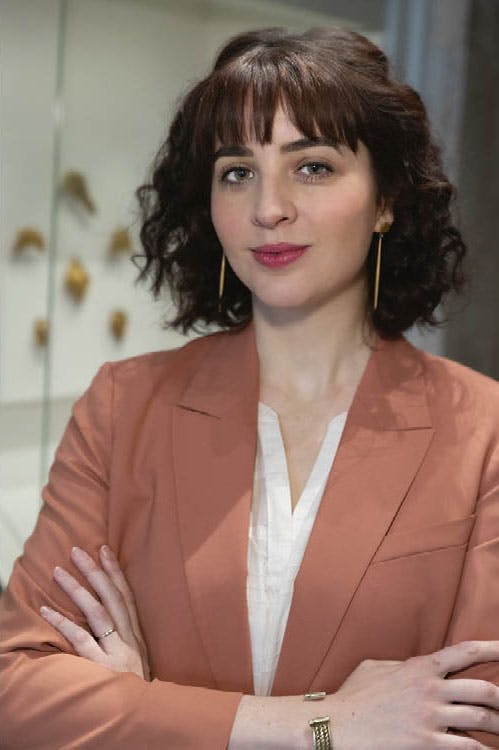- Magazine Article
- Staff
Meet Kristen Windmuller-Luna
The new curator of African arts brings a collaborative sensibility

Kristen Windmuller-Luna joined the museum as curator of African arts in January, having previously held a curatorial post at the Brooklyn Museum. A widely published scholar, she was featured in Henry Louis Gates’s 2017 PBS documentary Africa’s Great Civilizations. She graduated with a BA in art history from Yale University, and an MA and a PhD in the arts and architectures of Africa from Princeton University.
She describes the complexities of curating African arts. “When you’re responsible for a collection that spans an entire continent, thousands of different peoples, every medium, and all of time, it’s really important to think about how to define cultural specificity. For example: How does a practice like masquerade vary in Burkina Faso or in Mozambique, past to present? Every art is contemporary in its own time. What were the political, religious, economic, and social situations that these makers were responding to? What was the world of these artists, and how can we make that clear in the galleries?”
Establishing context does not require volumes of text on the walls or elaborate technology. One approach is to speak about individual artists rather than broad cultures or peoples. “It’s a very simple change to a label to start talking about an Akan artist, as opposed to the Akan peoples,” she says. Another approach is to use storytelling: “When you make labels more people-forward, in terms of both creators and audiences, the connections become more immediate.” Referencing a 17th- to 18th-century Akan terracotta in the gallery, she notes that “the woman who sculpted this did so from memory, after spending time carefully observing her subject. Then she created a memorial figure that blended individual features with cultural ideals of beauty.”
Museum buildings are typically defined largely by the needs of Western art, with spaces created to display large paintings on walls, much as some of those works of art were originally intended to be experienced. To Windmuller-Luna, the challenge of displaying African arts—which for the most part were not created for such settings—can be addressed in part by looking at how museums exhibit other kinds of art that have been decontextualized. “Think, for example, of the CMA’s European galleries, with architectural settings that reference the churches where these pieces would have been,” she says. “Nigerian artist Emeka Ogboh’s recent site-specific Ties That Bind evoked the original soundscape of many of the CMA’s historic African works. There are great possibilities for future reinstallations.”
She also seeks to display works of African art in ways that better represent their original presentation and use. “The collection has a really beautiful focus on Central and Western African sculpture carved exclusively by male artists,” she says. “But these sculptures were meant to be seen with fabrics, with clothing, with ceramics.” She adds that many of those materials were and still are customarily created by female artists. “Textiles are a major African creative medium, with wonderful examples available from the 19th and 20th centuries,” she notes, “and there are also brilliant weavers working and innovating today.”
The interplay of the historic and the contemporary is central to Windmuller-Luna’s curatorial conception of the arts of Africa. “Many of the cultures that made so-called traditional African arts in the past are still making the same sorts of things, but constantly innovating,” she says. “When talking about contemporary art, it is equally important to think about someone who is making work for contemporary religious or ritual use as it is to think of someone like Hervé Youmbi, who sells his work in the international art market and whose Totem 01/01-18
(Baga-Batcham-Alunga-Kota) is currently on view.”
Windmuller-Luna is also committed to cultivating partnerships in Africa. “I’ve been honored in the past to work in intensely collaborative ways with artists, scholars, and museum colleagues from Africa,” she says. “I want to emphasize that idea of not only continuing to welcome and work hand-in-hand with the Cleveland community but also of building close ties with people and institutions in Africa, of bringing in African voices and perspectives to broaden viewpoints around this collection. It’s wonderful to be part of a vibrant community and at a museum that’s willing to engage in such exchanges and that matters so much to its city.”
Cleveland Art, March/April 20202